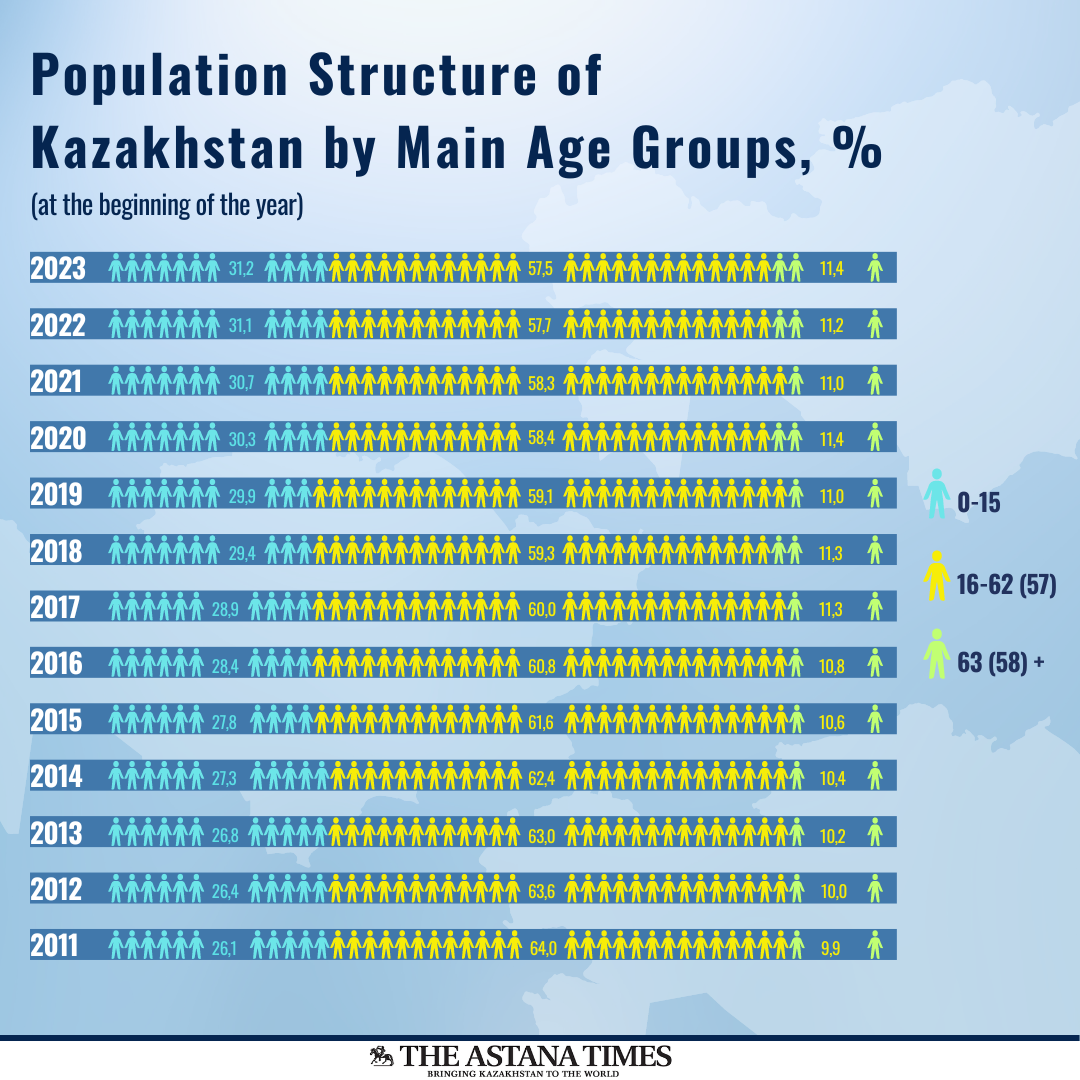The demographic landscape of Kazakhstan is evolving, impacting nearly all societal support systems. These changes affect the labor and consumer markets, as well as the education, healthcare, and pension systems, among others.

Photo credit: news-ru.arsu.kz
Growth of the working-age population
One of the fundamental trends is the transformation of the gender and age structure, characterized by several features.
Firstly, over the past decade, the proportion of working-age citizens within the population has decreased, dropping from 64% in 2011 to 57.7% in 2023. Meanwhile, the share of children has risen from 26.1% to 31.2%, and the share of the older generation has increased from 9.9% to 11.4%.
However, the rate of decline in the working-age population has slowed in recent years. This is due to the generation born in the 2000s, a period marked by a high birth rate, now reaching adulthood.

Secondly, the share of women in the population structure is declining. In 2011, women made up 51.8% of the population, while men constituted 48.2%. By early 2023, the share of women had decreased by 0.6%. This shift is attributed to the increasing number of citizens below working age, where the male population is higher (48.6% women and 51.4% men as of early 2023).
Thirdly, the northeast and central regions of the country are facing an aging population due to low natural population growth and negative net migration. The highest proportions of elderly residents are found in North Kazakhstan (18.6% at the beginning of 2023), East Kazakhstan (19.3%), and Kostanai (16.8%) regions. In contrast, the Turkistan and Mangystau regions have the youngest populations.
As a result, the country’s current demographic situation is quite favorable, providing substantial internal resources for the labor market and the overall economy.
Demographic dividend
There is the concept of a “demographic dividend” or “demographic bonus,” which refers to an economic advantage that a country can gain due to shifts in the age structure of its population.
In global practice, Southeast Asia offers notable examples of effectively leveraging the demographic dividend. Experts estimate that this demographic advantage significantly contributed to the “economic miracle” experienced by the East Asian Tigers, accounting for between one-quarter and two-fifths of their economic growth during the 1980s and 1990s.
According to the United Nations Population Fund (UNFPA), the Republic of Korea’s gross domestic product (GDP) per capita soared by 2,200% from 1950 to 2008. However, global examples show that favorable demographic trends do not always translate into GDP growth, as seen in Brazil. Therefore, addressing demographic challenges requires capitalizing on emerging development opportunities. This is one of the main tasks of socio-economic policy.
The author is Anna Alshanskaya, the head of Department of Economic Policy and Analysis at the Kazakhstan Institute for Strategic Studies under the President of Kazakhstan (KazISS).
The article was originally published on the Kisi.kz website.


